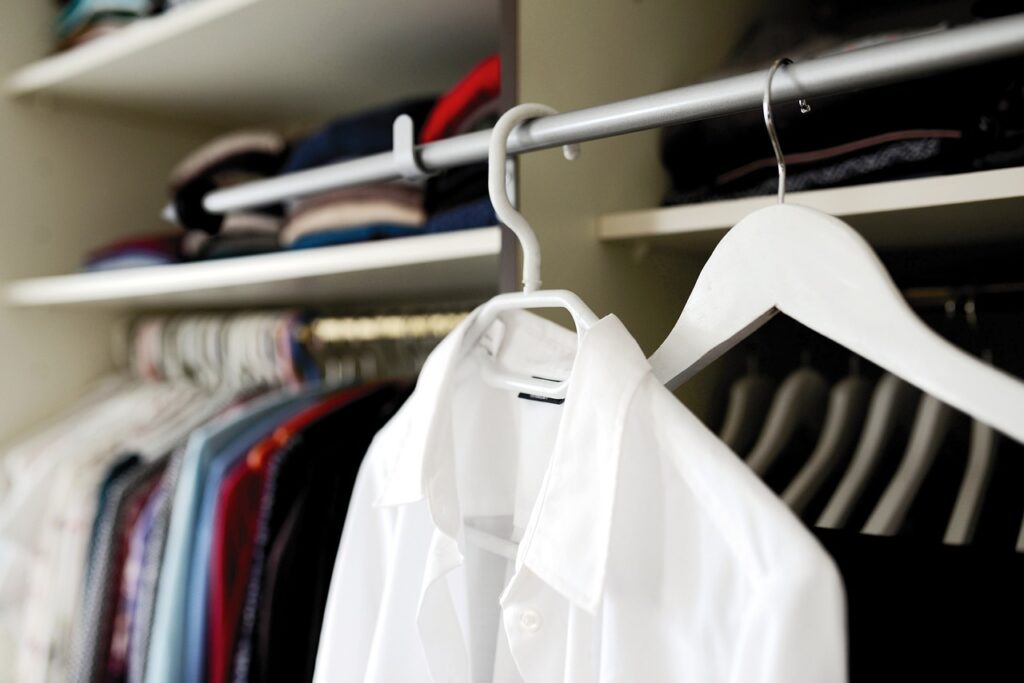The idea of owning just 30 clothing items might seem radical, maybe even impossible. But for many people embracing a minimalist lifestyle, the shift toward a capsule wardrobe has brought clarity, confidence, and a surprising amount of joy.
The 30-piece capsule wardrobe isn’t about restriction; it’s about intentional living. It’s a personal style revolution that trades clutter for calm, and impulse for purpose. And it’s more achievable than most might think.
What Is a Capsule Wardrobe?
A capsule wardrobe is a curated collection of versatile clothing items that can be mixed and matched to create a wide variety of outfits. The goal is to simplify your closet without sacrificing personal style.
While there’s no universal number, a 30-piece capsule wardrobe is a popular starting point. This typically includes tops, bottoms, dresses, outerwear, and shoes—but excludes workout clothes, underwear, accessories, and pajamas.
The concept isn’t new. It was first popularized by Susie Faux in the 1970s and later brought mainstream by Project 333—a minimalist fashion challenge created by Courtney Carver that encourages people to dress with 33 items or fewer for three months.
Why Choose Less?
The benefits of a 30-piece wardrobe go far beyond saving closet space:
- Reduced Decision Fatigue: Fewer choices mean easier mornings. With a tightly curated wardrobe, everything goes together, and getting dressed becomes a five-minute task instead of a 20-minute struggle.
- Elevated Personal Style: By eliminating the noise of trend-based shopping, people start to rediscover what actually suits their body, lifestyle, and preferences.
- Less Waste: Capsule wardrobes promote sustainable fashion. By choosing higher-quality pieces and buying less, consumers reduce their environmental footprint.
- More Confidence: When everything in your closet fits, flatters, and functions, you naturally feel better in what you wear.
Building the 30-Piece Capsule: Where to Begin
Starting from scratch can be overwhelming, especially if your current wardrobe is overflowing. But with a step-by-step approach, anyone can make the transition.
1. Take Inventory
Before adding or subtracting anything, take a full inventory. Lay everything out and group by category—tops, bottoms, outerwear, etc. Most people are shocked by how many items they actually own.
This process also reveals duplicates (do you really need seven striped shirts?) and items that haven’t been worn in years.
2. Define Your Style and Lifestyle Needs
A minimalist wardrobe should reflect who you are now—not who you were five years ago or who you think you “should” be.
Ask:
- What activities do I dress for most? (Work, errands, social events?)
- What colors and silhouettes do I feel most confident in?
- What’s my climate like year-round?
Defining your lifestyle needs ensures your capsule wardrobe is functional. If you work in a corporate setting, your 30 items will look very different from someone who works from home or is constantly outdoors.
3. Choose a Color Palette
Limiting your color palette is key to maximizing outfit combinations. A good rule of thumb is:
- 2–3 base neutrals (black, white, navy, beige)
- 1–2 accent colors (rust, forest green, mustard, etc.)
- 1–2 prints or patterns for variety
By sticking to complementary shades, every item can be worn with nearly every other item, multiplying outfit possibilities.
4. Select Versatile Pieces
Here’s a basic breakdown of what a 30-piece wardrobe might include:
- 6 tops (tees, blouses, or button-downs)
- 5 bottoms (jeans, trousers, skirts)
- 3 dresses or jumpsuits
- 2 blazers or jackets
- 2 coats (lightweight and heavy)
- 4 pairs of shoes (casual, dressy, boots, sneakers)
- 3 sweaters or layering pieces
- 5 wildcards (can be seasonal, special occasion, or just personal favorites)
Each item should earn its place by being wearable in at least three different ways. If a piece only works for one occasion or with one outfit, it may not belong in a capsule.
Tips for Maintaining a Capsule Wardrobe
- Shop With Intention
Avoid impulse purchases. Instead, keep a running wish list and assess whether the item fills a true gap or is just a fleeting want. - Follow the One-In, One-Out Rule
When adding a new item, remove one you no longer wear. This keeps the number manageable and encourages thoughtful decision-making. - Embrace Seasonality
Capsules can shift with the seasons. Some people rotate their wardrobes every 3–4 months, keeping off-season items stored away until needed. This keeps things fresh without increasing total wardrobe size. - Let Go of Guilt
Sentimental or expensive items that no longer serve you can weigh heavily. Remember: your closet is a space for the present you, not a museum of past mistakes. Donate, sell, or gift with grace.
Personal Style, Not Perfection
One of the biggest myths about capsule wardrobes is that they’re boring or uniform. In reality, having fewer clothes often unlocks more creativity. People start layering in new ways, pairing unexpected pieces, and becoming more aware of texture, silhouette, and fit.
Minimalism isn’t about wearing black turtlenecks every day (unless you want to). It’s about making room for what matters—and letting go of the rest.
Real-Life Inspiration
Many lifestyle influencers and style minimalists share their capsule wardrobes online, offering ideas and encouragement. A few worth exploring:
- Un-Fancy by Caroline Joy, one of the original capsule wardrobe bloggers.
- The Anna Edit, a UK-based content creator with a clean, modern take on minimal style.
- Style Bee, which emphasizes sustainable brands and mindful wardrobe planning.
A 30-piece capsule wardrobe is more than just a fashion experiment—it’s a mindset shift. It challenges the belief that more equals better and replaces it with the idea that enough is plenty.
And the result? More space, less stress, clearer style, and the quiet confidence that comes from knowing that what you wear is truly serving you.


